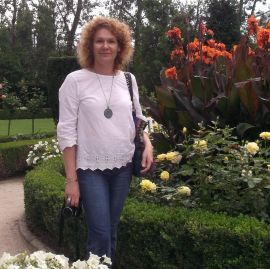Ta strona używa cookies
Ze względu na ustawienia Twojej przeglądarki oraz celem usprawnienia funkcjonowania witryny umcs.pl zostały zainstalowane pliki cookies. Korzystając ze strony wyrażasz zgodę na ich używanie. Możesz to zmienić w ustawieniach swojej przeglądarki.

Konsultacje dydaktyczne dla studentów
Stacjonarnie: pokój 159b, poniedziałek 12-13
ul. Akademicka 19
20-033 Lublin
Moje zaiteresowania badawcze to:
Aktywny członek Polskiego Towarzystwa Botanicznego, gdzie pełni funkcje: sekretarza Sekcji Geobotaniki i Ochrony Szaty Roślinnej oraz skarbnika oddziału lubelskiego PTB.
Wykaz bieżących, ważniejszych publikacji naukowych:
Kulik Mariusz, Bochniak Andrzej, Chabuz Witold [i in.]: Is Grazing Good for Wet Meadows? Vegetation Changes Caused by White-Backed Cattle, Agriculture (Switzerland), 2023, vol. 13, nr 2, Numer artykułu: 261. DOI:10.3390/agriculture13020261
Dresler Sławomir Daniel, Kováčik Jozef, Sowa Ireneusz [i in.]: Allantoin overaccumulation enhances production of metabolites under excess of metals but is not tightly regulated by nitric oxide, Journal of Hazardous Materials, 2022, vol. 436, Numer artykułu:129138. DOI:10.1016/j.jhazmat.2022.129138
Sugier Piotr Paweł, Rysiak Anna, Sugier Danuta [i in.]: Differentiation and Propagation Potential of Arnica montana L. Achenes as a Consequence of the Morphological Diversity of Flowers and the Position of Flower Heads on the Plant, Plants, 2022, vol. 11, nr 24, Numer artykułu: 3424. DOI:10.3390/plants11243424
